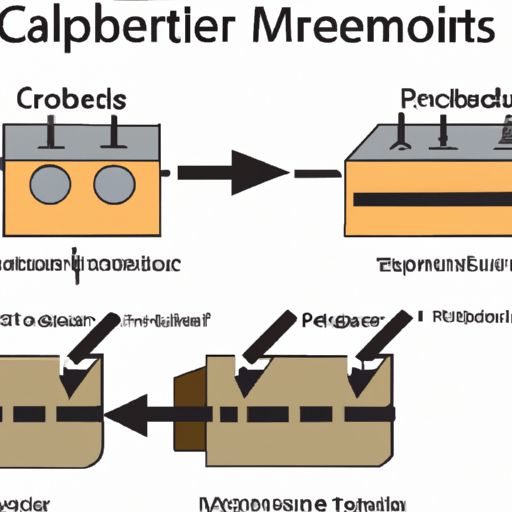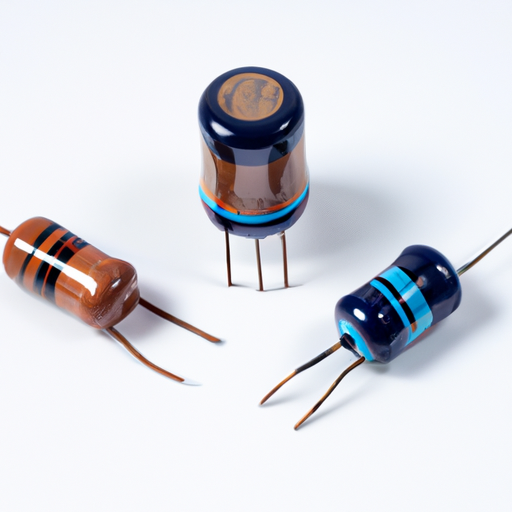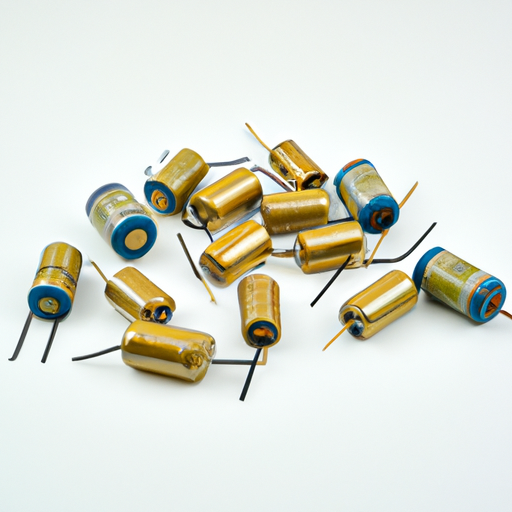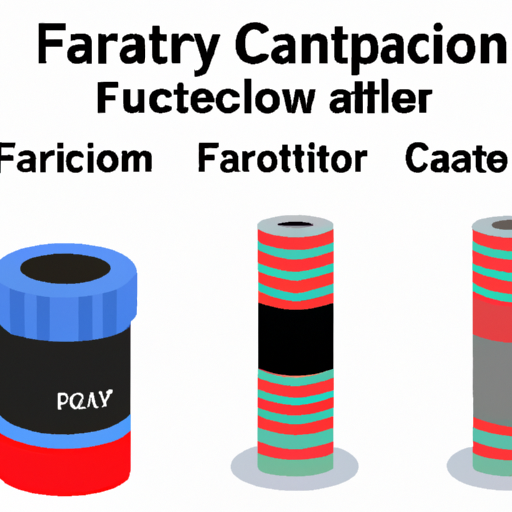What are the mainstream models of capacitors connected in parallel?
What are the Mainstream Models of Capacitors Connected in Parallel?
I. Introduction
Capacitors are fundamental components in electrical circuits, playing a crucial role in energy storage, filtering, and signal processing. They store electrical energy in an electric field, allowing them to release it when needed. Understanding how capacitors function and how they can be connected is essential for anyone involved in electronics, whether you're a hobbyist, student, or professional engineer. This article will focus on the parallel connection of capacitors, exploring the mainstream models available, their characteristics, and their applications.
II. Basic Principles of Capacitors
A. What is a Capacitor?
A capacitor is an electronic component that consists of two conductive plates separated by an insulating material known as a dielectric. When a voltage is applied across the plates, an electric field is created, allowing the capacitor to store energy. The amount of energy stored is proportional to the voltage applied and the capacitance of the capacitor.
B. Capacitance and Its Measurement
Capacitance is the measure of a capacitor's ability to store charge, expressed in Farads (F). One Farad is defined as the capacitance of a capacitor that stores one coulomb of charge at one volt. Factors affecting capacitance include the surface area of the plates, the distance between them, and the type of dielectric material used.
III. Understanding Parallel Connection of Capacitors
A. Definition of Parallel Connection
When capacitors are connected in parallel, their terminals are connected to the same voltage source, allowing them to share the same voltage across their plates. This configuration results in an increase in the total capacitance of the circuit.
B. Advantages of Connecting Capacitors in Parallel
1. **Increased Total Capacitance**: The total capacitance of capacitors in parallel is the sum of their individual capacitances. This allows for greater energy storage capacity in a circuit.
2. **Voltage Stability**: Connecting capacitors in parallel helps maintain a stable voltage across the circuit, which is particularly important in power supply applications.
C. Mathematical Representation of Parallel Capacitors
The formula for calculating the total capacitance (C_total) of capacitors connected in parallel is:
\[ C_{total} = C_1 + C_2 + C_3 + ... + C_n \]
Where \( C_1, C_2, C_3, \) and \( C_n \) are the capacitances of the individual capacitors. This simple addition makes it easy to design circuits with the desired capacitance.
IV. Mainstream Models of Capacitors
A. Ceramic Capacitors
Ceramic capacitors are widely used due to their small size, low cost, and reliability. They are made from ceramic materials and are available in various capacitance values.
Characteristics and Applications: Ceramic capacitors are often used in high-frequency applications, decoupling, and filtering.
Advantages and Disadvantages: They have low equivalent series resistance (ESR) and are stable over a wide temperature range. However, they can exhibit capacitance loss under DC bias.
B. Electrolytic Capacitors
Electrolytic capacitors are polarized capacitors that offer high capacitance values in a relatively small package. They are commonly used in power supply circuits.
Structure and Functionality: These capacitors use an electrolyte as one of the plates, allowing for a larger surface area and higher capacitance.
Common Uses and Limitations: They are ideal for smoothing out voltage fluctuations but are limited to DC applications and can be sensitive to temperature and voltage ratings.
C. Tantalum Capacitors
Tantalum capacitors are known for their stability and reliability, making them suitable for applications where performance is critical.
Unique Properties and Benefits: They have a high capacitance-to-volume ratio and low ESR, which makes them ideal for compact electronic devices.
Typical Applications: Commonly found in power supply circuits, decoupling, and timing applications.
D. Film Capacitors
Film capacitors are made from thin plastic films and are known for their excellent performance and reliability.
Types of Film Capacitors: There are various types, including polyester, polypropylene, and polystyrene capacitors, each with unique properties.
Performance and Reliability: They offer low ESR, high insulation resistance, and are less prone to failure compared to electrolytic capacitors.
E. Supercapacitors
Supercapacitors, also known as ultracapacitors, are energy storage devices that bridge the gap between traditional capacitors and batteries.
Definition and Working Principle: They store energy through electrostatic charge rather than chemical reactions, allowing for rapid charge and discharge cycles.
Applications in Modern Technology: Supercapacitors are used in applications requiring quick bursts of energy, such as in regenerative braking systems and energy harvesting devices.
V. Applications of Parallel Capacitor Configurations
Capacitors connected in parallel find numerous applications in electronic circuits:
A. Power Supply Smoothing
In power supply circuits, parallel capacitors help smooth out voltage fluctuations, ensuring a stable output voltage. This is crucial for sensitive electronic devices.
B. Signal Coupling and Decoupling
Parallel capacitors are used to couple and decouple signals in audio and radio frequency applications, allowing for better signal integrity and reduced noise.
C. Timing Circuits
In timing circuits, capacitors in parallel can help achieve the desired timing characteristics by adjusting the total capacitance.
D. Energy Storage Systems
In renewable energy systems, parallel capacitors can be used to store energy generated from solar panels or wind turbines, providing a buffer for energy supply.
VI. Considerations When Using Capacitors in Parallel
When designing circuits with capacitors in parallel, several factors must be considered:
A. Voltage Ratings and Safety
Ensure that the voltage ratings of the capacitors are appropriate for the application to prevent failure or damage.
B. Tolerance and Temperature Coefficients
Capacitors have tolerances that affect their performance. Understanding these tolerances and temperature coefficients is essential for reliable circuit operation.
C. Physical Size and Layout in Circuits
The physical size of capacitors can impact circuit design. Proper layout is crucial to minimize parasitic effects and ensure optimal performance.
D. Impact on Circuit Performance
The choice of capacitor type and configuration can significantly affect circuit performance, including frequency response and stability.
VII. Conclusion
In summary, capacitors are vital components in electrical circuits, and understanding their configurations, particularly in parallel, is essential for effective circuit design. The mainstream models of capacitors—ceramic, electrolytic, tantalum, film, and supercapacitors—each offer unique advantages and applications. As technology continues to evolve, so too will capacitor technology, leading to new innovations and applications in the field of electronics. Understanding these components and their configurations will empower engineers and hobbyists alike to create more efficient and reliable electronic systems.
VIII. References
For further reading and resources on capacitors and their applications, consider the following:
- "The Art of Electronics" by Paul Horowitz and Winfield Hill
- "Capacitors: Technology and Applications" by John L. H. Hsu
- Relevant industry standards from organizations such as the Institute of Electrical and Electronics Engineers (IEEE) and the International Electrotechnical Commission (IEC).
By exploring these resources, readers can deepen their understanding of capacitors and their critical role in modern electronics.






